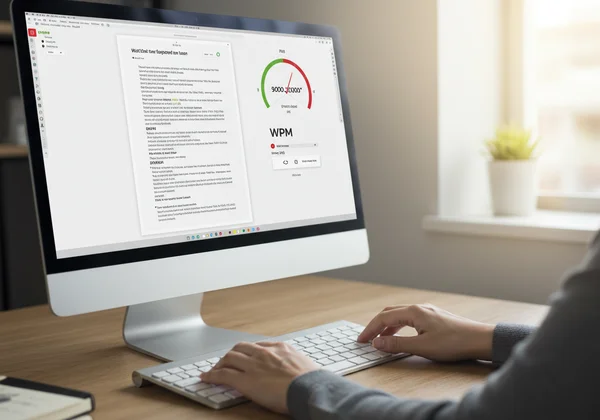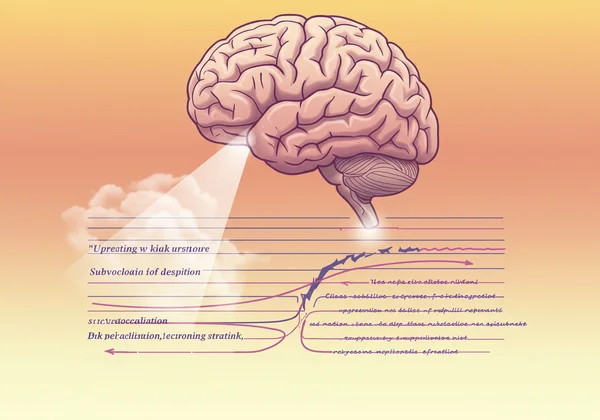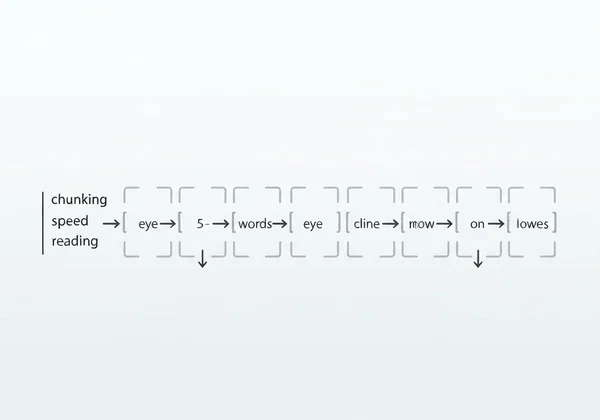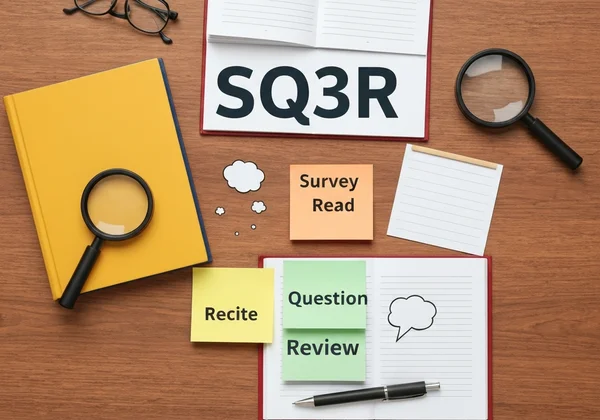阅读速度测试与如何更快阅读:你的终极指南
文件堆积如山,让你喘不过气吗?在我们快节奏的世界里,阅读不仅仅是消遣——它是助你成功的“超能力”。如果你想在不损失理解力的情况下更快地吸收信息,那么你来对地方了。本指南提供科学验证的技巧,旨在提高你的阅读速度,并将信息过载转化为可控的信息流。第一步? 测定你的基准 以追踪你的进步。
了解你的当前阅读速度
在你改进之前,你需要知道自己的现状。一次 WPM 测试(即每分钟阅读字数测试)是你的起跑线。这个关键数据不仅仅是一个分数;更是你提升阅读能力、设定宏伟目标的路线图。了解你当前的阅读效率是充分发挥你潜力的关键。
每分钟字数 (WPM) 是什么,为何它对阅读效率至关重要
每分钟字数 (WPM) 是衡量阅读速度的通用指标。它计算你在每分钟内能阅读多少个单词。然而,真正的效率并非仅仅指速度,更在于阅读的 有效 速度。这就是为什么一项全面的评估还必须衡量阅读理解力。毕竟,如果快速浏览文本却未能理解其含义,那将毫无意义。同时追踪 WPM 和理解力能全面反映你的阅读能力。
成年人的平均阅读速度是多少?
大多数成年人的平均阅读速度为 200 到 250 WPM。低于此速度通常被认为是慢速,而熟练的读者在保持良好理解力的前提下,阅读速度可轻松突破 300 WPM。例如,大学教授的阅读速度可能在 400 WPM 左右。了解这些基准有助于你评估自身表现,并了解潜在的提升空间。
如何准确测量你的阅读速度(立即参加免费测试!)
要获得准确的测量结果,你需要的不仅仅是计时器和一段文本。像我们提供的这种适当的评估,会控制各种变量,更重要的是,会辅以理解性问题。这种双重侧重确保衡量的是你 理解 文本的速度,而非仅仅是扫视的速度。准备好揭晓你的 WPM 了吗? 参加我们的免费测试 ,并在几分钟内获得你的个性化报告。

克服常见的阅读障碍
大多数读者都受制于根深蒂固的阅读习惯,这些习惯阻碍了他们提高阅读速度。要真正 提升阅读速度 ,你必须首先识别并破除这些潜意识障碍。它们是你迈向更快、更有效阅读之路上的最大阻碍。
无声杀手:如何停止默读
默读是指在阅读过程中,在脑海中无声地念出每个单词的习惯。虽然这是学习阅读的自然组成部分,但它会将你的阅读速度与说话速度挂钩,从而形成一个瓶颈。要克服这一点,尝试在阅读时轻轻哼歌,或者用手指作为引导,让你的眼睛移动得比你的内心声音更快。这将迫使你的大脑开始以视觉而非听觉方式处理单词。
消除回读与重复阅读的习惯
你是否经常发现自己的眼睛会跳回到已经读过的单词或句子上?这种被称为回读的习惯,源于对自身理解力的缺乏信心。它会打乱你的阅读节奏,并严重拖慢你的速度。训练自己相信大脑能够一次性吸收信息的能力。使用引导工具,例如笔或手指,可以创造稳定的向前动量,并有效阻止眼睛回溯。

拓展视觉广度:一次性看更多单词
未经训练的读者往往一次只关注一个单词。然而,速读高手则会训练自己拓展视觉广度,一眼就能捕捉到词组或“词块”。他们不是读“快速的-棕色的-狐狸”,而是看到“ [快速的棕色狐狸] ”。你可以通过有意识地放宽焦点,在文本行上移动时,留意中心视野边缘的词语来练习这一点。
掌握核心速读技巧
一旦你开始摒弃旧习惯,就该培养新的高效阅读习惯了。这本 速读指南 侧重于实用的技巧,旨在重新训练你的大脑,实现文本的快速处理。掌握这些方法是大幅提升阅读速度、取得显著进步的关键。
指针法:用引导工具引导视线
最简单却最有效的技巧之一是使用物理引导工具,例如你的手指或一支笔,在阅读时沿着文本行下方划动。这种方法,通常被称为指针法,有两个作用:它能为你的眼睛设定一致的阅读节奏,并通过消除干扰来提高你的专注力。通过逐步加快引导工具的移动速度,你可以训练眼睛在页面上更快、更流畅地移动。
分块与词组阅读:超越单字阅读
在拓展视觉广度的基础上,“分块”是一种一次性阅读多个单词的积极练习。你不再对每个单词进行视觉停留,而是训练眼睛每行只停留 3-4 次,每次停留吸收一个词组或一组词。首先尝试一次阅读三个单词,然后逐渐扩展到四个或五个。这将显著减少阅读一段文本所需的眼球移动次数。

略读与扫读:不同目标的策略性阅读
并非所有阅读都要求深入理解。策略性读者懂得何时切换阅读模式。略读 用于快速获取文本的整体概览;你快速阅读标题、副标题和段落的首句,以把握主要思想。扫读 则用于查找特定信息,例如人名或日期。你的眼睛会迅速掠过文本,忽略其他所有内容,直至找到你所需关键词。
在提升阅读速度的同时,提高理解与记忆力
担心速度会牺牲理解力吗?这是一个常见的误区。当你正确 学习速读 时,理解力反而能得到提升。更快的阅读要求更高的专注度,能有效防止思绪游走。关键在于将速度练习与积极的阅读策略相结合。
积极阅读策略:深入文本,主动思考
被动阅读仅仅是让眼睛在文字上游走。积极阅读则是一个动态过程,需要你主动与材料互动。在开始之前,问自己想从文本中学习什么。阅读时,质疑作者论点,预测后续内容,并将新信息与已知知识建立联系。这种思维互动能让你的大脑保持高度专注,并显著提升记忆效果。
总结与笔记:强化记忆效果
用自己的话总结信息,是将其牢固铭记于心的强大工具。在阅读完一章或一个重要部分后,暂停片刻,记下关键点或大声向自己解释。绘制思维导图是另一种极佳的方式,能够可视化地组织复杂信息,并洞察不同想法之间的关联。
SQ3R 方法:学术文本的强大框架
对于内容密集或复杂的材料,SQ3R 方法是一个极具价值的框架。它代表概览(Survey)、提问(Question)、阅读(Read)、复述(Recite)和回顾(Review)。
- 概览:快速浏览章节以获取概览。
- 提问:将标题转化为问题。
- 阅读:积极阅读该部分以回答你的问题。
- 复述:总结你刚刚阅读的信息。
- 回顾:查看你的笔记以巩固你的理解。 这种结构化方法确保你充分参与,牢记所读内容,并通过 阅读测试 验证效果。

练习、追踪与维持你的阅读进步
速读并非魔法,而是一项需要持续练习的技能。准备好取得持久的进步了吗?坚持定期练习并追踪成果,是让你新掌握的技能成为第二天性的关键。
持续练习:将速读融入习惯
每天专门安排 15-20 分钟练习速读技巧。利用这段时间有意识地应用本指南中描述的方法,例如使用引导工具和分块阅读。持之以恒远比一蹴而就更重要。每天短时高效的练习,将远胜于长时间却不规律的训练。
追踪 WPM 与理解力随时间的变化(立即测试你的进步!)
如何判断你的练习是否奏效?通过定期追踪你的 WPM 和理解分数。这能提供关键反馈,明确指出哪些技巧有效,以及哪些方面仍需改进。看到分数持续提升,也是一个强大的动力。养成 立即测试你的进度 并记录结果的习惯,将你的进步历程可视化。
为你的阅读之旅设定实际目标
不要期望阅读速度能一夜之间从 200 WPM 跃升至 1000 WPM。设定小的、渐进式目标,例如每周将 WPM 提升 10%,同时保持或提高理解分数。实际目标能有效激发你的动力,并避免产生挫败感。在实现目标的道路上庆祝每一个里程碑,以建立积极的势头。
你的更快、更智能阅读之旅,即刻启程
你现在已拥有一份成为更快、更有效读者的完整路线图。我们已详细介绍了如何评估基准、克服常见障碍、掌握强大技巧,并建立可持续的练习体系。提升阅读技能的路径已然清晰,但需付诸行动。
不要再让信息过载阻碍你的前行。开启非凡学习潜力的旅程,即刻启程。今天就和我们一起 立即参加免费阅读速度测试 ,发现你真实的 WPM,踏上掌握这项 21 世纪关键技能的道路。
关于阅读速度的常见问题
何为理想的阅读速度?
“理想”的阅读速度因个人目标而异,但通常来说,对于成年人,若能达到 300 WPM 以上且理解力超过 80%,则可视为优秀。平均水平则在 200-250 WPM 左右。了解自身阅读水平的最佳方式是进行一次可靠的 WPM 测试 ,并与这些基准进行比较。
如何有效提升阅读速度与理解力?
最有效的方法是采取三管齐下的策略:1) 消除默读、回读等不良习惯。2) 练习核心技巧,如指针法和分块阅读。3) 利用能同时衡量速度与理解力的工具,持续追踪你的进步。 在线阅读测试 正是为此而生。
屏幕阅读真的会减慢速度吗?
是的,对许多人而言,由于眩光和蓝光造成的数字眼疲劳,屏幕阅读速度比纸质阅读慢 20-30%。为缓解此问题,请定期休息,调整屏幕亮度,并应用与阅读纸质书籍相同的速读技巧。
成年人的平均 WPM 是多少?
如前所述,大多数成年人的平均阅读速度介于每分钟 200 到 250 个单词之间。然而,这会因文本难度和阅读目的的不同而差异巨大。对于技术性材料,阅读速度可能会显著下降;而对于简单的小说,则可能更高。